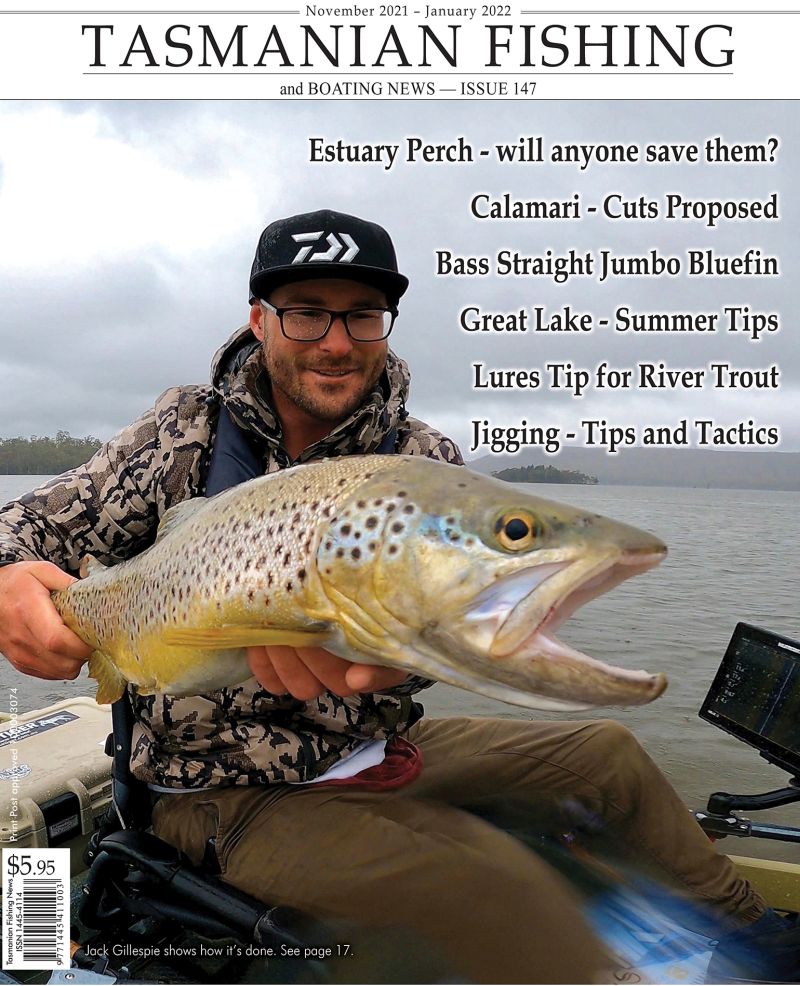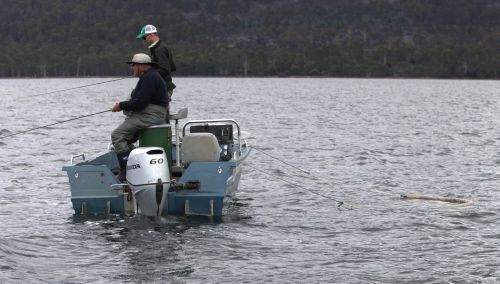Jan's Flies
The flies in this issue, a Black Nymph, Green Gold Bead Head and Chain Eye Nymph, are normally fished from a boat as the added weight generally makes them too heavy to fish in shallow water. However, they can be fished dead drift under a large buoyant indicator.
If you have a boat and know where there are some weed beds all three flies work on the right day. Getting down into the fishing zone is essential and this is what these flies are designed to do. As always though, if one doesn't work try something else.
The following fly patterns are all weighted in one way or another. Weight can be added to flies in many different ways, the most common is with lead wire. Lead wire comes in many different diameters, so if you require a No. 16 hook a very fine diameter would be required. It is also worth studying how the fly will respond to the added weight. For example when retrieving a fly with weight at the head and the retrieve is stopped the fly will dip head first giving a very life like reaction.
Beads used as heads are very popular - again the size of the bead must correspond with the hook size. The popular colours are bronze, silver and copper.
Chain eyes have been used for many years. When the old type vanity units were in fashion there must have been lots of chains missing of the plugs especially if there was a fly tier in the family. The chain is now available in most fly tying outlets.
Lead eyes are another weight method these are normally shaped like an hour glass and can also be painted as the outside is quite flat.
It is worth nothing if lead wire is added by wrapping around the shank it will quite often cause the fly to swim upside down, this can be corrected by tying one strip of wire on the underside of the fly.
Black Nymph
Hook- Kamasan B175 size 10 or 12
Thread- Black Lead Wire - fine
Tail- Small bunch of peacock herl from the top of the eye
Rib- Medium copper wire
Body- Black antron and squirrel blend
Upper thorax- Black raffine
Thorax dubbing- Same as the body
Legs- fine black rubber
- Take the thread 12-14 turns along shank and tie in ½ cm of lead wire on each side of the shank, tie in firmly.
- Continue along the shank with the thread, tie in a small bunch of peacock herl tips for tail and trim off excess. Place copper wire in.
- Dub body on finishing just in front of the lead wire, tie in black raffine for top and bottom thorax. Now with the same dubbing material as used for the body, form a head.
- Tie in on the underside two sets of legs, trim the legs to correspond with the body size of the nymph.
- Bring the under body raffine forward and tie off and do like wise to top raffine. Whip finish and varnish. As the weight on this nymph can not be seen it is advisable to mark the fly in some way. The method I used is to put a very small dot of red varnish on the whip finish behind the hook eye.
Green Gold Bead Head
Hook- Kamasan B175 size 8,10,12
Head- Gold head thread - black
Tail- Two goose boits (green)
Rib- Medium bronze wire
Body- Medium green antron
Size Flash- Two natural coloured goose boits
- Place bead onto hook small hole first.
- Starting behind the bead wind the thread to full length of the shank.
- Tie in goose boits one at a time for the tail.
- Dub body on finishing behind the bead, bring rib forward with nice even turns
- With the two natural coloured goose boits tie them in one at a time on each side of the body secure each one directly behind the bead.
- Now take a little more dubbing and cover where the boits have been tied in. Whip finish and varnish.
Chain Eye Nymph
Hook- Kamasan B175 -size 10
Thread- Black Chain - Black or whatever colour is desired
Tail- Pheasant feather tail fibres
Rib- Copper wire
Body- Pheasant tail legs- pheasant tail
- Take thread along the shank 12-14 turns and tie in chain eyes across the shank with a figure eight method, then continue with thread to the end of hook shank.
- Take the full length of pheasant tail fibres from the tail feather and tie tips in for tail do not cut the remaining fibres away. Place rib in with nice even turns.
- Now with the remaining fibres wind them forward forming the body, finishing behind the eyes, tie down firmly and cut end tips away. Bring the rib forward with nice even turns.
- With another small bunch of pheasant tail fibres tie them down behind the eyes by the butt end so the pointed ends can be pulled forward to create legs. When the points are pulled forward tie down firmly, now take even amounts of tips and pull back under the eyes and tie in firmly. Whip and varnish.



